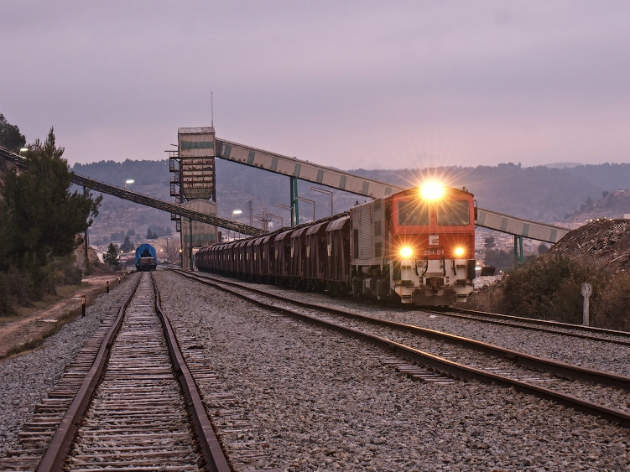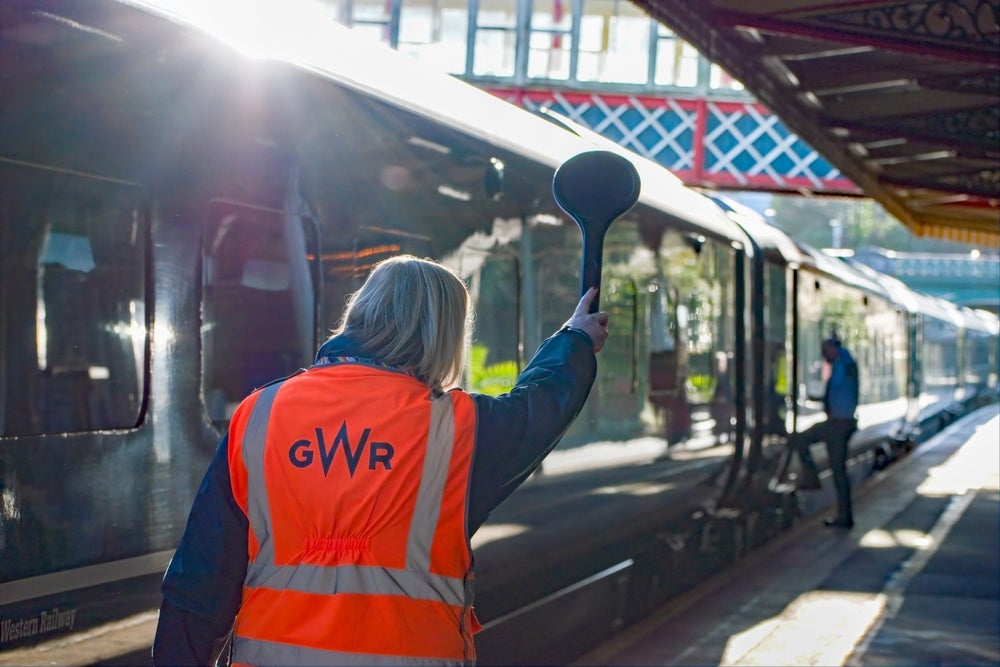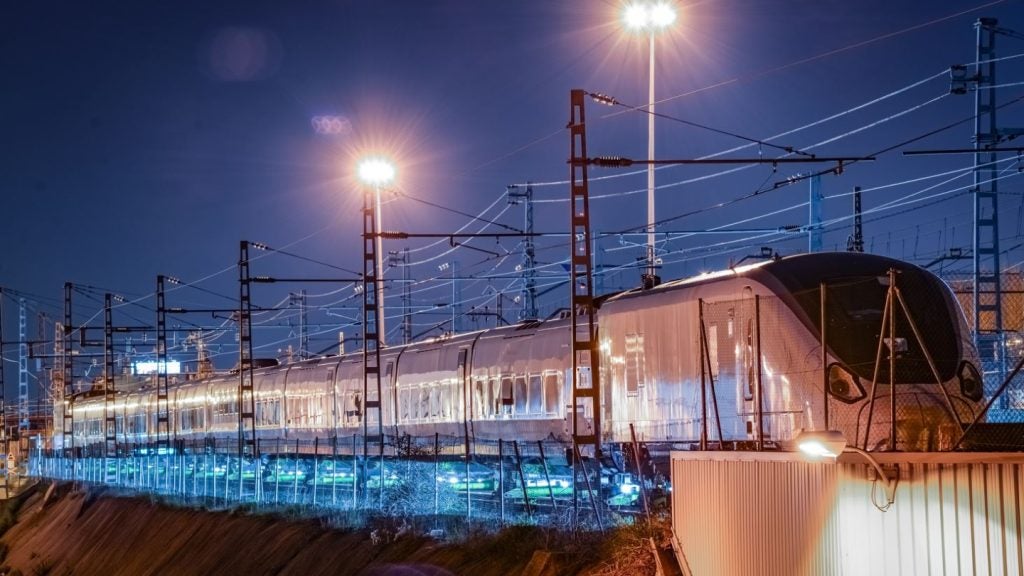
After an 18-day trip across more than 12,000km, the first freight train from China arrived to much fanfare in London on 18 January, heralding a new era of trade between the two countries.
Loaded with suitcases, clothes and an assortment of household goods, the 34-wagon freight train passed through Kazakhstan, Russia, Belarus, Poland, Germany, Belgium and France, before crossing the English Channel into the UK. The route followed the steps of the old Silk Road, the centuries-old trade artery between China and Europe.
The new railway is hoped to, once again, strengthen the ties between the two economies and reinvigorate the 2,000-year-old trading route.
The starting point for “East Wind”, as the train is known, is Yiwu, a rich international trade city in East China where more than 40,000 stores display their merchandise across 1.5 million square metres.
Yiwu’s reputation as a vibrant and diverse marketplace has blossomed since 2005, when the UN, the World Bank and Morgan Stanley named it the “largest small commodity wholesale market in the world”. Ever since, Yiwu has continued to attract sellers of all countries and nationalities.
Now, at a time when Britain is looking to forge new connections and strengthen existent trade deals with economies outside of the EU, the freight train marks a faster, cheaper and more convenient direct link right into the heart of China’s booming economy.
How well do you really know your competitors?
Access the most comprehensive Company Profiles on the market, powered by GlobalData. Save hours of research. Gain competitive edge.

Thank you!
Your download email will arrive shortly
Not ready to buy yet? Download a free sample
We are confident about the unique quality of our Company Profiles. However, we want you to make the most beneficial decision for your business, so we offer a free sample that you can download by submitting the below form
By GlobalDataReviving the old Silk Road
In January, London became the fifteenth city to join the rapidly expanding web of European markets for the Chinese freight train services.
The cross-continent trade route was officially revitalised in 2013, when a train from Chongqing arrived in Duisburg, Germany via the Yuxinou (Chongqing-Xinjiang-Europe) International Railway. As of 2016, more than 2,100 trains have been dispatched via the Yuxinou Railway, according to statistics from the China Railway Corporation.
With the recent extension into London, the route now follows the ancient Silk Road or Silk Route, which stood at the heart of cultural and economic collaboration between the East and the West for centuries.
For the past four years, Chinese President Xi Jinping has been enthusiastically promoting his Belt and Road initiative, practically a new name for the historic Silk Road. The massively ambitious infrastructure and development strategy focuses on connectivity and cooperation between the People’s Republic of China and the rest of Eurasia – and an expansive, ever-growing rail route is possibly the core element to its success, one that is being doggedly pursued by China.
Both inside and outside of its borders, rail development is one of China’s core future goals. By 2020, China plans to invest 3.5tn yuan ($504bn) in railway construction, almost doubling its existent track mileage and thus connecting over 80% of its major cities.
From the UK’s perspective, it means more than just connecting to China’s biggest marketplace, as the ever-growing rail network will offer virtually borderless trade potential.
Can rail compete with established freight-forwarders?
On average, freight trains between China and Europe are three times faster than shipping by sea, and one-fifth of the cost of transport by air, according to China Daily.
For the UK in particular, “the fast train route between Yiwu and London takes 30 days less than maritime transportation, while only costing a fifth of air transportation”, said Fang Xudong, vice-general manager of Tianmeng Industrial Investment.
But despite the time and cost advantages, it is still unlikely that a weekly train service will be able to break, or even have a significant effect, over established trade patterns.
“The cost of shipping a 20ft-equivalent unit by rail to Europe still averages around five times more than by ocean, and the capacity constraints of trains and rail infrastructure compared with ocean-going vessels mean that, while rail services have the potential to create a significant dent in air cargo volumes, they will most likely never account for more than 1%-2% of ocean volumes,” wrote senior editor of Global Ports Turloch Mooney in May last year.
For the time being, the rail route is seen more as a convenient middle-ground option, rather than a serious competitor to the conventional sea freight market.
When it comes to air transport, however, apart from the big reduction in cost, rail offers a dramatic reduction in emissions, an issue that is today becoming increasingly important to freight forwarders and their clients worldwide.
Freight services company GreenCarrier compared transit times and CO2 emissions between transport modes across the Suzhou-Warsaw route, and found that while air freight takes two days and consumes 139t of CO2, rail transit takes 14 days and consumes only 5t of CO2. By comparison, ocean freight takes 40 days and creates 2.1t of carbon emissions.
For that niche section of import-exporters who cannot afford to wait months for product delivery, but are also concerned about their carbon footprint, the rail service is bound to be a great new alternative.
A changing trade pattern
Despite its position as a middle-ground solution, the rail freight service between China and Europe has rapidly grown in popularity, making up a growing share of the £1bn daily trade flow between the two countries.
“The CR Express was earlier used primarily for transporting Chinese exports to Europe, but Chinese companies are now increasingly using the service to import goods from Europe,” Hong Kong Trade Development Council (HKTDC) notes.
For its part, the UK has recently been very vocal about its enthusiasm to strengthen ties with China.
While Prime Minister Theresa May said she was “excited about the opportunities for expanding trade and investment between our two countries”, Chancellor of the Exchequer Philip Hammond asserted that the UK’s “trade relationship with China is now more important than ever”.
The new rail link certainly gives weight to these statements. “The service will improve China-Britain trade ties, strengthen connectivity with Western Europe, while better serving China’s Belt and Road Initiative,” said China’s official press agency Xinhua in a statement on the day of the departure.
More so now that the UK is in the grip of uncertainty over Brexit and is hurrying to secure trade allies in a post-EU future, the new London-China freight service will certainly help bring the two closer, both physically and symbolically.






